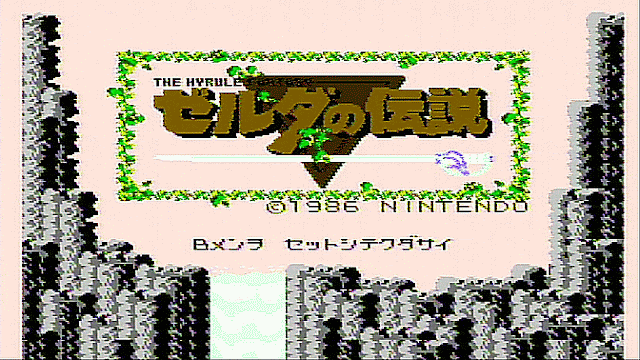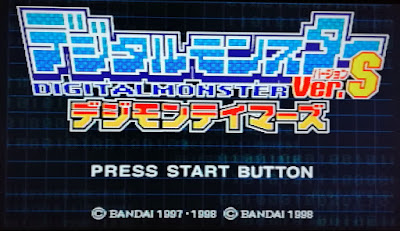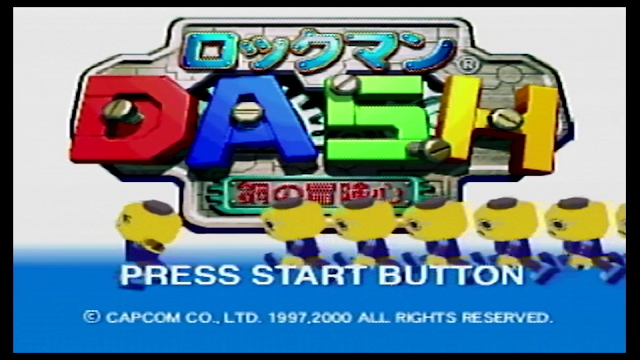Backlog Game Reviews 47 : The Legend of Zelda (Famicom Disk Drive System)
Hey there, and welcome to Backlog Game Reviews.
Today we're taking a look at another retro game, The Legend of Zelda on the Famicom Disk System. It was originally released as a launch title for the Disk System in February 21st, 1986. It came to North America on a cartridge in August 22nd, 1987, it then came to Europe in November 15th, 1987, and it got a cartridge re-release on the Famicom in Japan in February 19th, 1994.
 |
| A list of all the items in the game. |
On the first day it was released in Japan it sold 1 million copies. In North America, it was the first NES game to sell more than 1 million copies and by 1988 it sold 2 million copies. Critics at the time absolutely loved the game, they had nothing but praise for it. It won multiple awards and is the game that started the insanely popular Legend of Zelda series. Let's take a look and see what the first Zelda game is like.
 |
| The intro text scroll. |
The Story
This game's story takes place in the Kingdom of Hyrule. The kingdom was at peace, until one day it was invaded by an army of monsters led by the Prince of Darkness, Ganon. Before attacking Hyrule Ganon stole the Triforce of power, a powerful relic created by one of the three goddesses of Hyrule. With the Triforce of power in his possession, Ganon is close to unstoppable. The princess of Hyrule, Princess Zelda knew that Ganon wished to become even more powerful and was after another part of the Triforce, the Triforce of wisdom.
 |
| Hyrule is full of monsters. |
To prevent Ganon from obtaining the Triforce Zelda broke it into eight pieces and had them scattered around Hyrule. Unable to fight off Ganon's forces Zelda was eventually captured, but before her capture, Zelda ordered her servant Impa to find someone brave and strong enough to fight Ganon.
 |
| Your goal in this game is restore the shattered Triforce of wisdom. |
While searching for a hero to combat Ganon, Impa was attacked by Ganon's monsters. The situation seemed hopeless, but a young man named Link appeared and fought them off. Impa told Link of Ganon's invasion and Zelda's abduction. Thinking that Link is the hero she's been searching for Impa asks Link to defeat Ganon and save Zelda. Link agreed and set off on an epic adventure to save not only Zelda but all of Hyrule.
 |
| Link doesn't have a sword at the start of game. How did he save Impa without a sword? |
The story in this game isn't all that different from other games of its time. It all boils down to saving a princess from an evil monster. But to the game's credit, the story does go a little deeper than that. Ganon has a reason for kidnapping Zelda, he doesn't do it just because he can. It's all so he can get the Triforce of wisdom and take over Hyrule. Something else that deserves some praise is the text scroll that explains the story. Most NES and Famicom games just dump you into the game without telling you what's going on, so it's always nice when a retro game has some kind of text scroll or prologue.
 |
| The disk version of this game has load times, but they're not that long. |
The Gameplay
The Legend of Zelda is an open-world adventure game. You're free to go anywhere in Hyrule as long as you have the required items to access the area you want to go to. Your main goal is to find the eight dungeons and retrieve the Triforce of wisdom piece hidden within them.
 |
| Shopping at one of the many shops. |
There's more to find in Hyrule other than dungeons. The kingdom is full of secrets ranging from hidden heart containers that increase your max health, to hidden caves that house friendly monsters that pay you to keep their home a secret. Hyrule is a lot of fun to explore, there are so many things to discover you can spend hours looking around.
 |
| The boss of the first dungeon. |
Hyrule is fun to explore, but only to a certain extent. Throughout your adventure, you'll need to burn bushes and bomb walls to find hidden rooms and some of the dungeons. This is where the game gets annoying, the game doesn't give you any hints as to what walls are bomb-able and what bushes are burnable. So the only choice you have is to bomb every wall and burn every bush you come across, and this is just plain annoying. And that's why I recommend playing this game with a map or guide. The game is much more enjoyable without having to blindly search for secrets.
 |
| Bombing a fake wall. |
If cryptic games don't bother you then this is a game you should check out sometime, the gameplay doesn't feel all that dated and holds up fairly well. It also has decent replay value thanks to the second quest that becomes available after you beat the game once.
 |
| The file select screen. You can start the second quest right away if you put Zelda as your name. |
The Presentation
This game doesn't have that large of a soundtrack, there are only about 4 songs, but the music that is here is really good. The title theme sets the stage and lets you know you're in for an epic adventure. The overworld theme sets up the mood for your adventure and makes the land of Hyrule feel like a large kingdom. The dungeon theme is intimidating and makes the dungeons feel like dangerous areas that shouldn't be taken lightly. The soundtrack in this game is easily one of the best on the NES and Famicom.
 |
| Without a guide you're going to have a hard time finding all of the secrets in this game. |
The graphics while not the best on the system are good. The game still looks nice to this day. Everything is bright and colorful, there's no sprite flickering and the game never glitches out. It's a good-looking game and doesn't look as old as it is.
Conclusion
For this review I played the Famicom Disk Drive System version, It's not that much different from the cartridge version of the game. The disk version has better sound, but it does have to load when you enter and exit a dungeon. But in all honesty, these load times aren't that bad, they only take a second or two. There's also a version on the Gameboy Advance which is a port of the cartridge version. So no matter what version you play you're more or less playing the same game.
That's all I have to say about the Legend of Zelda. Thanks for reading! For the next review, we'll take a look at a Gameboy Advance game. I hope to see you again here at Backlog Game Reviews.




Comments
Post a Comment